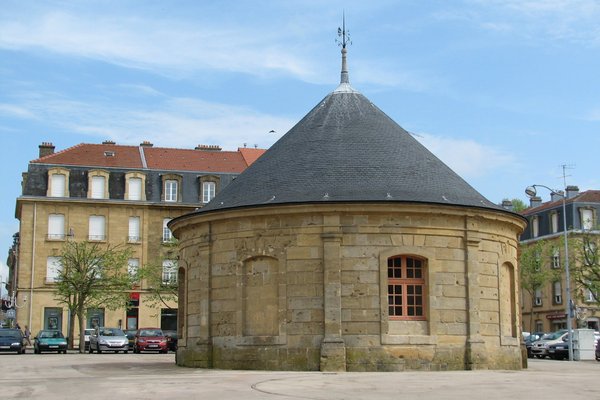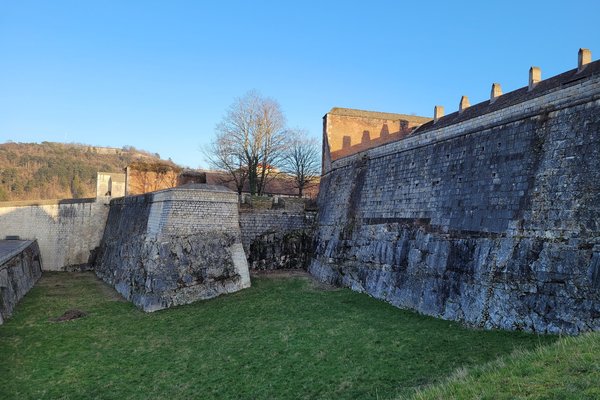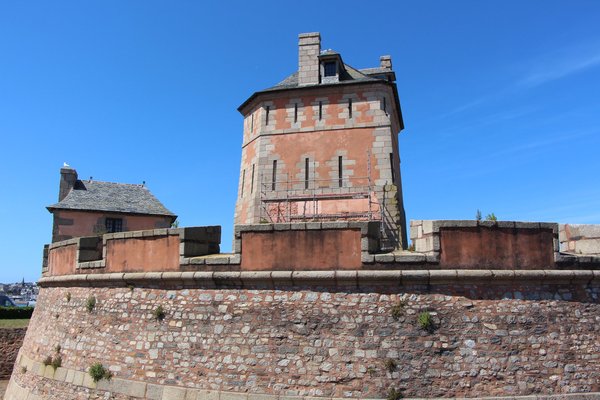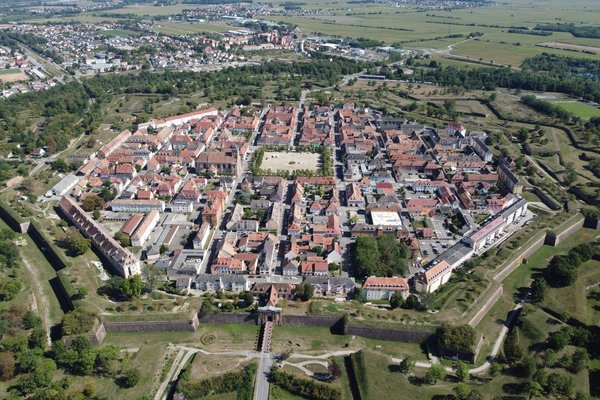France
Fortifications of Vauban
The Fortifications of Vauban have been a significant contribution to universal military architecture.
The twelve groups of fortified buildings formed a defensive ring around France. The remaining sites include both fortifications and various kinds of military buildings. They were constructed by Sébastien Le Prestre de Vauban (1633-1707), a military engineer of King Louis XIV. He was influential far beyond the French borders through his theoretical thinking.
Community Perspective: the star review here is by Hubert, who has visited all 12 selected components and ranked them!
Site Info
Official Information
- Full Name
- Fortifications of Vauban (ID: 1283)
- Country
- France
- Status
-
Inscribed 2008
Site history
History of Fortifications of Vauban
- 2008: Revision
- Includes former TWHS Ligne fortifiée du Nord de la France sous le Ancien Regime: frontière commune avec la Belgique (1995), which included the former TWHS Besancon (1984).
- 2008: Inscribed
- Inscribed
- Type
- Cultural
- Criteria
- i
- ii
- iv
Links
- UNESCO
- whc.unesco.org
- Official
-
- sites-vauban.org — Sites Vauban
- Related
-
- en.wikipedia.org — Wiki on Life and Work of Vauban
All Links
UNESCO.org
- whc.unesco.org — whc.unesco.org/
Official Website
- sites-vauban.org — Sites Vauban
Related Resources
- en.wikipedia.org — Wiki on Life and Work of Vauban
News Article
- July 13, 2013 thelocal.fr — Citadel of Besançon evicts baboon vandals
Community Information
- Community Category
- Secular structure: Military and Fortifications
Travel Information
Burgundy Hotspot
Aquitania hotspot
Nancy hotspot
Recent Connections
-
Cultural sites taking up an entire island
Tatihou
-
Named after individual people
-
Best seen from the sky
Especially the star-shaped forts such a…
Connections of Fortifications of Vauban
- Individual People
-
-
Louis XIV
Louis ordered the construction of the fortifications
-
- Geography
-
-
Pyrenees
Villefranche de Conflent & Mont Louis -
Alps
Vauban sites at Briançon and Mont-Dauphin -
Bay of Biscay
Saint-Martin-de-Ré: city walls and citadel -
English Channel
Les tours-observatoires de Tatihou et de la Hougue -
Atlantic Ocean
-La tour Dorée de Camaret-sur-Mer -La citadelle el l'enceinte de Saint-Martin-de-Ré -Les tours-observatoires de Tatihou et de la Hougue
-
- Trivia
-
-
Tour de France
2021, Stage 15 (Villefranche-de-Conflent and Mont-Louis), and 2022, Stage 6 (Longwy) -
Viewable from another WHS
Citadelle d'Arras (Fortifications of Vauban) can be seen from the adjacent Faubourg d'Amiens Cemetery (Funerary and memory sites of the First World War), and vice versa. -
Cultural sites taking up an entire island
Tatihou
-
- History
-
-
Sieges and Battles
Neuf-Brisach was besieged by the Germans in 1870 -
Second World War
During World War II the Germans captured the Citadel of Besançon in 1940. During the Occupation, German firing squads executed some one hundred resistance fighters of diffferent nationalities. A memorial, in the form of four stakes standing between the well and the chapel of Saint Stephen, commemorates "les fusillés" - the men who were shot.... After heavy fighting, the Americans captured the Citadel in 1944 and used it to hold German prisoners of war.See en.wikipedia.org
-
Places of Execution
Arras Citadel: 1941-44 to execute French resistance personnel and others -
Nine Years' War
The naval Battle of La Hougue took place off the town in 1692. On 3 June 1692 during a heated battle with the Anglo-Dutch fleet, twelve French ships were sunk in the vicinity of the Island of Tatihou, just off the coast of Saint-Vaast-la-Hougue. It was the decisive naval battle of the Nine Years' War. Following the French defeat, two fortified towers were built from 1694 onwards on the mound at La Hougue and Tatihou Island by a student of Vauban, Benjamin de Combes, in order to defend the bay.See en.wikipedia.org
-
- Architecture
-
-
Conical roofs
Wells in Longwy -
Designed by Vauban
-
Multiple Works of a single architect
12 structures -
Octagons
Neuf-Brisach was built as an octagon -
Star fort
Neuf-Brisach, Arras Citadel, Saint-Martin-de-Ré, citadel of Besançon, Longwy, Saint-Vaast-la-Hougue/Tatihou -
Ideal City
Longwy and Neuf-Brisach
-
- World Heritage Process
-
-
Part of Cultural nomination rejected
Two sites initially nominated by France were removed from the final list: - Bazoches, Nièvre: chateau - Belle-Ile-en-Mer, Morbihan: citadel and walls surrounding Le Palais -
Perfect Inscriptions
2008 -
Extended from original TWHS
From Besancon (1984).
-
- Religion and Belief
-
-
Cathedrals
Cathédrale Saint-Jean (Besançon)
-
- Human Activity
-
-
Salt
Saint-Martin-de-Ré: "Durant le XVIIIe siècle, le port est très actif avec le commerce du sel, du vin et des eaux de vie." (wiki fr) -
Sea Ports
Saint-Martin-de-Ré -
Irrigation and drainage
Longwy: 5 wells for drinking water to see the inhabitants through a siege
-
- Constructions
-
-
Canals
Neuf-BrisachSee fr.wikipedia.org
-
Walled cities
Besancon, Villefranche-de-Conflent etc. -
Prison
Tatihou island was used as a prison for Germans during World War I. -
Cisterns
Two cisterns to hold rain water are part of the fortified town of Longwy -
Casemates
-
Obelisk
Longwy: Le monument aux Défenseurs de la Place de Longwy -
Monumental Fountains
Neuf-Brisach -
Notable Bridges
Pont d'Asfeld (location 1283-004): Designed by Vauban. Work on the bridge, led by the Marquis of Asfeld, was completed in 1731.See fr.wikipedia.org
-
- WHS on Other Lists
-
-
Europa Nostra 7 Most Endangered
2013: Vauban’s Fortifications in Briançon -
Most beautiful villages
Villefranche-de-Conflent is among Les plus beaux villages de France ('France's most beautiful villages')
-
- Timeline
-
-
Built in the 17th century
It bears witness to the evolution of European fortification in the 17th century (OUV)
-
- WHS Hotspots
-
-
Jura Swiss Alps hotspot
-
Burgundy Hotspot
Besancon -
Aquitania hotspot
La citadelle et le fort Paté et Médoc de Blaye/Cussac-Fort-Médoc - some 40km north of Bordeaux (no public transport) -
Nancy hotspot
Longwy: ca. 2 hour by train & on foot
-
- Science and Technology
-
-
Scientific Developments
Four solaire de Mont-Louis: The Mont-Louis Solar Furnace, is the world's first solar furnace, built in 1949, by engineer Felix TrombeSee en.wikipedia.org
-
- Visiting conditions
-
-
Best seen from the sky
Especially the star-shaped forts such as Neuf-Brisach
-
- WHS Names
News
- thelocal.fr 07/13/2013
- Citadel of Besançon evicts baboon …
Recent Visitors
Visitors of Fortifications of Vauban
- Adrian
- Adrian Turtschi
- Afshin Iranpour
- Alberto Rodriguez Gutierrez
- Alexander Barabanov
- Alexander Lehmann
- Alex Baranda
- alicemears
- A. Mehmet Haksever
- Ammon Watkins
- Ana Lozano
- Andrew_Kerr
- Angela Vandyck
- Antonio J.
- Argo
- ArnaudFilloux
- arnaugir
- Ask Gudmundsen
- Aspasia
- Assif
- Astraftis
- a.thum
- Atila Ege
- AustralLights
- BaziFettehenne
- Bill Maurmann
- Bin
- Bram de Bruin
- Brendan Carroll
- Brett Baumann
- CampbellME
- Can SARICA
- Caspar
- Cezar Grozavu
- chenboada
- Cheryl
- ChrisDorn
- Christian Wagner
- Christine
- christof
- Christoph
- Christravelblog
- Claire Bradshaw
- ClaraHH
- Clyde
- Colossus
- Corinne Vail
- Cristina Erba
- Csaba Nováczky
- ctravel
- CugelVance
- cwthong
- Cyberczar
- czesioszpachelka
- Dani Cyr
- Daniela Hohmann
- Daniel Chazad
- Daniel Gabi
- Daniel R-F
- Dan Pettigrew
- David Berlanda
- DavidS
- Delphine Delaunay
- Digits
- Dimitar Krastev
- Dirk-pieter
- Dolemite92
- Dorejd
- Dwight Zehuan Xiao
- Echwel
- Elaine McArdle
- Elia Vettorato
- eljx1988
- Els Slots
- Emilia
- erdsaumnaht
- Erik Jelinek
- Errol Neo
- Eva Kisgyorgy
- Evgenii
- fabi-ddorf
- Fan Yibo
- Farinelli
- Federico P.
- Feldhase
- Femke Roos
- Frederik Dawson
- Geert Luiken
- GeorgeIng61
- Gernot
- Gilles
- giloudepuertorico
- Grendel Gongan
- grimloch
- Grzegorz Andruszkiewicz
- Hadrianus
- Hammeel
- Harald T.
- Harry Mitsidis
- Hasco
- Henri
- Hubert
- Iain Jackson
- Ian Cade
- Ilya Burlak
- Ingemar Eriksson
- Ivan
- Ivan Rucek
- Jakob F.
- James Bowyer
- Jana and Matt
- Janina Lehmann
- janis
- Janos
- Jan-Willem
- Jan Zimmermann
- Jarek Pokrzywnicki
- Jasam
- Javier
- Jawnbeary
- Jay T
- Jean Lecaillon
- Jeanne OGrady
- Jeffrey Chai
- Jens
- Jesse S 2010
- Jezza
- Joel on the Road
- John Smaranda
- Jonas Hagung
- Jonas Kremer
- jonathanfr
- Jon Eshuijs
- JoStof
- Joyce van Soest
- Just_hatched
- KarenBMoore
- Karito Vies
- Kasper
- Kbecq
- Ken DJ
- Kevin247
- Klaus Freisinger
- Knut
- KoenigMarke
- krtek
- Kurt Lauer
- Laetitia Yin
- Lara Adler
- Laurine
- Ligocsicnarf
- Lisu Marian
- Loic Pedras
- Lucas Del Puppo
- Lucio
- lucyannesmith
- Ludvan
- Luis Filipe Gaspar
- Maciej Gil
- Maciej Gowin
- Mahuhe
- Małgosia Łupicka
- manuel011197
- Manuelfunk
- marc Rouserez
- Mardigny
- Marinemajor
- Marlies van Wolfswinkel
- Martina Rúčková
- Mathijs
- Matthewsharris
- MaxHeAnouBen
- MaYumin
- MH
- M. Huineman
- Michaela0705
- Michael Ayers
- MichaelH
- Michael Novins
- MichaelStro
- Mihai Dascalu
- Mikko
- Mikko Syrjä
- MMM
- Mohboh
- MoPython
- Morodhi
- Naim Y
- nan
- Nasebaer
- Nicole Lampos
- Nihal Ege
- Nikolay Marinov
- NoahFranc
- Olli-Pekka Turunen
- PabloNorte
- Patrik
- Paul Schofield
- Persian Globetrotter
- PeterA
- PeterH
- Peter Lööv
- Petteri
- Philipp Leu
- Philipp Peterer
- Pierre T
- Pincze
- Piotr Wasil
- pressdm
- Rafał Kałczuga
- Ralf Regele
- Randi Thomsen
- Reisedachs
- Reza
- Riccardo Quaranta
- Rick Ohm
- RobRos
- Roel Sterken
- Roger Ourset
- Roman Bruehwiler
- Roman Raab
- Rubbie
- Rudegirl
- Sabrina Liebehentschel
- Samy G
- Sandmann15
- Sandra!
- Schnitzel
- Sergio Arjona
- Shandos Cleaver
- Shijie ZHU
- Simonh
- SirLoydd
- Slavi
- Solivagant
- Sorel Americo
- Stanislaw Warwas
- Stefan A. Michelfeit
- stephanvermeulen
- Stijn
- Sturuss
- Svein Elias
- Szucs Tamas
- TaiTT
- Tamara Ratz
- Taotao Chen
- Tarquinio_Superbo
- Tatiana Nikulnikova
- Tcchang0825
- Thomas Buechler
- Thomas Harold Watson
- Thomas van der Walt
- Tom Flaten
- tommasorossotti
- tony0001
- triath
- Truls Brekke
- Tschibi
- Tsunami
- Vanessa Buechler
- Van Hung
- Vincent Cheung
- VLabhard
- Walter
- Wieland
- WILLIAM RICH
- Wojciech Fedoruk
- Wo_ko
- Xander Huang
- Xiong Wei
- Xiquinho Silva
- YaroMir
- Yevhen Ivanovych
- Yongcheng Liu
- Zach
- Zhenjun Liu
- Zoë Sheng
- Zos M
Community Reviews
Show full reviews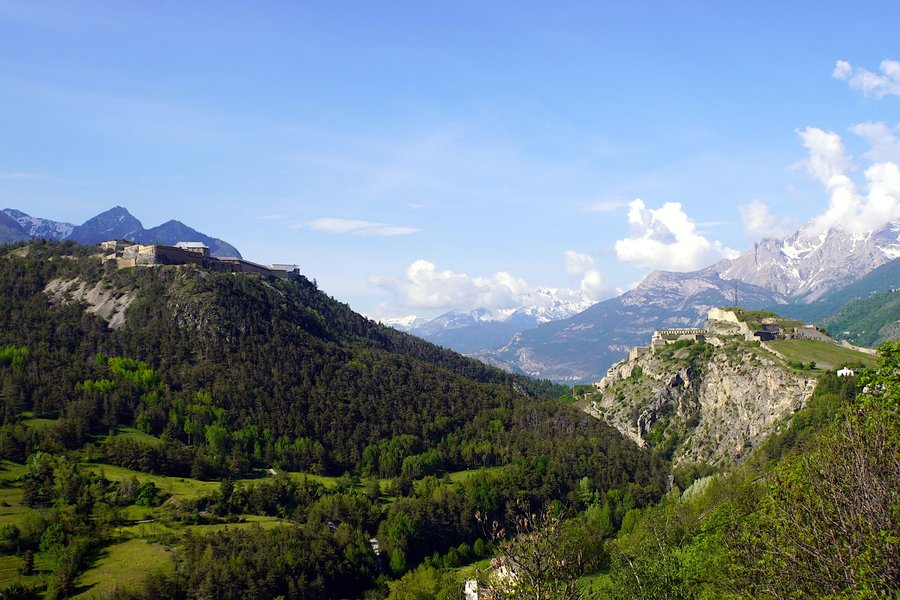
Vauban completed! In June 2023, on my trip to Lombardy and Piedmont, I took the opportunity for a day trip to the French Alps to visit my last two Vauban Fortifications. In my recent review of the Savoy Residences, I complained about serial WHS with too many locations. However, the Vauban Fortifications are, in my opinion, an example of an appropriate number of sub-locations. The twelve fortifications are scattered along the outer borders of present-day France and you can compare how Vauban adapted his construction principles to the different terrain: in the high and low mountains, on flat terrain, on the coast, at an estuary and on islands.At the time of my first review (see below), I had visited six of the locations. In my second review here, I start with the two sites in the Alps, because they have not yet been described in more detail. And then I give my personal ranking of all Vauban sites, with short descriptions.
The setting of the Briancon Fortifications (photo) is truly picturesque: the fortified old town (Cité Vauban) with Fort Chateau in the centre, and a system of forts and fortifications scattered on the surrounding slopes and hilltops. All this to protect the strategically important mountain pass to Italy. I had expected a rather touristy spot, but there were only a few people in the old town on the Sunday morning when I visited. And that might be the reason why the forts don't have regular opening hours, there are only …
Keep reading 0 comments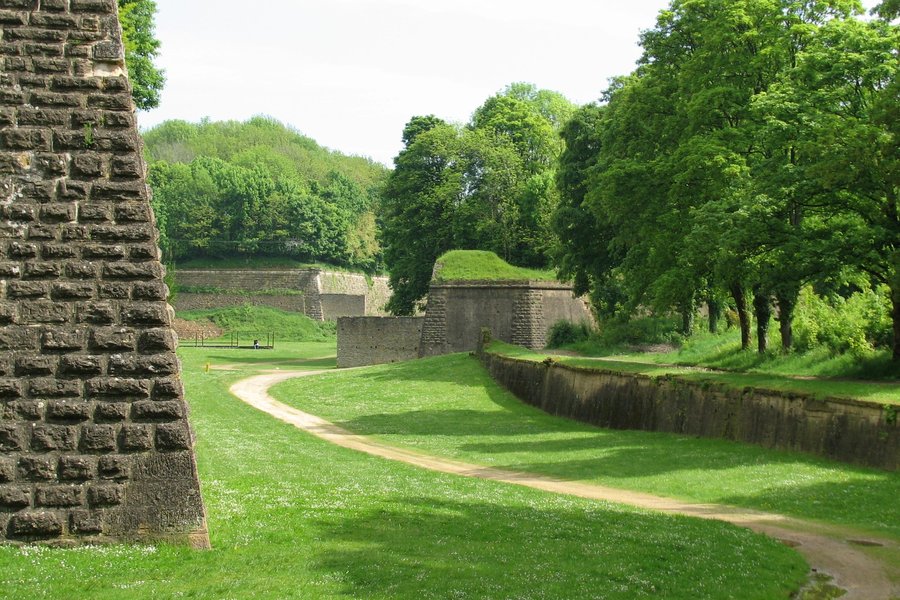
We have visited a few of these fortifications, but recently saw two more, meaning that I felt I could 'tick off' this site now.
Previously we had visited the fortifications at Villefranche-de-Conflent on a holiday to South-West France. Although we stayed in the village and endured a ride on the Petit Tren Jaune, I cannot in all honesty remember much out the Vauban elements. I can recall walking on the ramparts and thinking how pretty the village and its setting were, and have photos to prove it, however I certainly did not pay sufficient attention to listed elements.
Then last year we attempted to visit the incredible citadelle at Besancon. So successful were Vauban's fortifications here that we couldn't get near and drove around for over an hour trying to find somewhere suitable to leave our motorhome so we could visit. Impenetrable indeed!! We did manage to get a good look at the citadelle but only from ground level. Another near miss.
So earlier this year our route south from the UK gave us an opportunity to try to visit three more, Arras, Longwy and Neuf-Brisach. Sadly, a rare day of snow meant we didn't dare stop at Longwy, but we have at last been successful and visited the other two.
Arras was first, and I must admit, I liked the citadelle here, and the town too, very much. Nick-named the 'beautiful, useless one' by the residents, it might not have had a successful military history, …
Keep reading 0 comments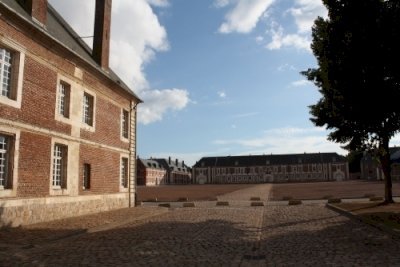
July 2018 - Arras was the first, and so far only, Vauban fortifiaction that we visited, actually we visited Lille as well. That one is no WHS though.
In Arras, there are some post WWII buildings that are destroying the authenticity. But the fort is quite amazing. Hope to see more of them in order to be able to judge.
Keep reading 0 comments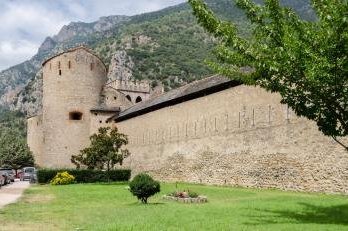
I visited Villefranche-de-Conflent in August 2017. The town is awfully picturesque (it is also on the register of the Most Beautiful Villages in France) and very tiny, literally two streets and a square.
The components of the WH site brought mixed impressions. The ramparts are very imposing when viewed from outside the city walls, but I found touring them slightly disappointing: for all the history and all the good preservation, you basically end up walking a couple of kilometers of pathways of different width, with very little to see except a few largely empty courtyards and chambers. If you are expecting elevated perspectives of the town, you will not find much to choose from.
Cova Bastera is a cave complex ending in a fortified chamber overlooking the town. It is the only component that offers free entry. The caves pale in comparison to the nearby Grotte des Grandes Canalettes (which has nothing to do with Vauban), so make sure you visit Cova Bastera first.
Fort Liberia high above town takes about 20 minutes of climbing up the stairs even from the most athletic. It is certainly worth an effort. Inside, there is a great example of a self-contained military post, with barracks, service areas, a church, and beautiful crenellations. If you descend by the underground passages (750+ steps, not for claustrophobic), you will come upon an open landing with unobstructed panoramic views over the town.
Time allowance for all components of the WH listing: ~3 hours. I ended up spending …
Keep reading 0 comments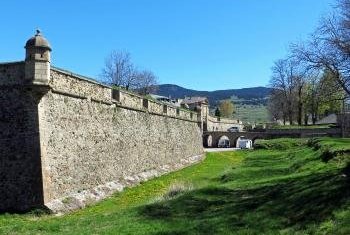
I visited the citadel and town of Mont-Louis, one of the inscribed Fortifications of Vauban, in the spring of 2013 as part of a day tour from Barcelona. Mont-Louis is located in the Pyrenees Mountains in southern France, and I thoroughly enjoyed wandering through the town and around the citadel. Vauban has been recognized as a superb military engineer, and it was fascinating to see the trenches separating walls in the fortified citadel, as well as turrets and towers providing line of sight and defense. As has been mentioned in another review, the main part of the citadel is closed, as it is currently a training ground for French Army commandoes. I was amused to see an obstacle course had been constructed along the rear rampart of the citadel in order to train the commandoes. Despite the closure of the central portion of the citadel, I was able to view quite a bit of the engineering Vauban employed in the construction of the citadel and the walled town, and it was well worth a visit. Also of note at Mont-Louis, but not recognized as part of the World Heritage inscription, is the world's first solar furnace, which is bright and visible upon arrival to the town.
Logistics: Mont-Louis can be visited via private transportation or tour, or via the French rail network's Little Yellow Train (le Petit Train Juane) which traverses the Pyrenees.
Keep reading 0 comments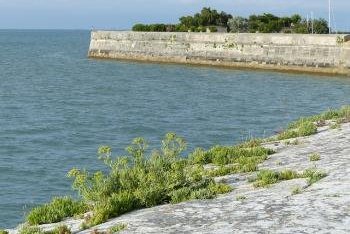
I visited yet another set of Vauban fortifications in July 2016. This time I visited the sites near La Rochelle, namely the inscribed citadel and forts of Paté and Médoc de Blaye/Cussac-Fort-Médoc and the citadel and walls of Saint-Martin-de-Re on the Ile de Re, as well as the non-inscribed walls and fortifications at Ile d'Aix. The great weather, sandy beaches and friendly people helped to have yet another positive experience with this inscribed series. I now visited 8 out of 12 inscribed sites and apart from the ones which are currently used as prisons, I'd say that all are worth visiting if you happen to be nearby. So make sure to keep your eye on their location and at least stop for a quick visit if you can.
Keep reading 0 comments
I have been to the Fortifications of Vauban in Longwy during an 8 month evangelical missions trip to France in 1994. Longwy was our base town.
The Fortifications are awesome! I would walk around them a few times a week when the weather was nice. It was neat to see other people enjoying the area as well. I highly recommend checking them out if you're ever in that area.
I would also like to add that the French people were some of the kindest and friendliest people I have ever met.
Keep reading 0 comments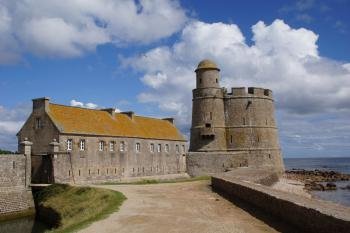
Vauban was a famous general during the reign of Louis XIV, but today he is better known for his achievements as a military engineer. He built and modernized countless fortifications in order to establish a defence ring along the French borders. More than 30 projects were built from scratch: forts, citadels, city walls, towers and even entire towns. His genius was that he perfectly adapted the constructions to the specific terrain. This serial WHS comprises twelve well-preserved and exemplary sites. So far, I visited six of them on different trips: Mount-Louis and Villefranche-de-Conflent in the Pyrenées, Longwy in low mountain range, Neuf-Brisach in the lowlands, and most recently Saint-Vaast-la-Hougue and Camaret-sur-Mer at the seaside.
In August 2015, we visited the Vauban towers in Normandy and Brittany. The Saint-Vaast-la-Hougue site comprises two fortified towers facing each other to protect the harbour, one at La Hogue and the other on Tatihou island. At low tide, you can walk to Tatihou, it's a distance of about one kilometre from the harbour. We arrived in the afternoon at high tide and we had to take the ferry which actually is a quirky amphibious vehicle (tickets at the Accueil-Billetterie, Quai Vauban). Access to the island is limited to 500 visitors per day, so we booked two tickets by phone a few days before. However, there were only about 15 other people on the ferry at 3 pm, so that I suppose they rarely reach the daily limit. The ferry ride was quite funny, though …
Keep reading 0 comments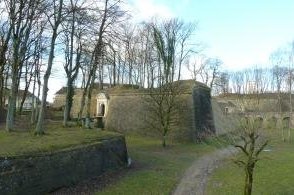
The route home from a third trip to Luxembourg allowed me to finally pay a proper visit to one of the listed sites by having a swift breakfast at the upper town in Longwy.
It is only a small place so a quick stroll allowed us to explore most of the key aspects of the site. The pointed angular casements stood out, like they did at the other Vauban fortifications I have visited. Even with a limited grip on military tactics I could see their function and how they were incredibly suited to the needs of their day. When you factor in that places like this surround the whole country you can start to see their outstanding universal value.
The stroll brought us to the big empty square in the centre, which was home to the well and a few other points of interest. But it was mostly just a void used as a car park. Then it was time to head off.
It was certainly a more interesting visit than my previous trip. When thinking about the process that led to all these towns and forts surrounding the whole country it is very easy to ascertain how they are a great testament to a period of political and military thought.
[Site 4: Experience 3]
Keep reading 0 comments
In summer 2015, I travelled France and visited Neuf-Brisach (OK), Besancon (fantastic system of forts, most of them can be seen from the walls of main fort), Camaret-sur-Mer (small and rather poor WHS closed for maintainance 2015 but otherwise a very nice place to visit), Saint-Vaast-la-Hougne (unaccesable due to French military area), Arras (now completely opened, fort accessible by car and foot but no activity for tourists) and at last Longwy (worth a visit).
General lack of information in other languages than french, best i Besancon where they have found out about that.
Keep reading 0 comments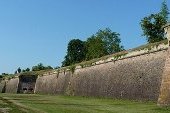
I visited a couple of Vauban sites in June-July 2013. I visited the château of Bazoches first, owned by Vauban in the past, although it was not included in the list. Then I visited Besancon with its high city walls and Fort Griffon but still I felt that these were nothing special. Last but not least I visited Neuf-Brisach and I was rewarded for my perseverance. The fortifications of Neuf-Brisach are still in good condition and so I decided to go for the 5km circuit. There are two lines of defence and aerial shots clearly indicate the star shaped fortifications of Vauban and the regular layout of the incredibly small "city"! There were signposts with information all round the circuit so I could appreciate different aspects of the fortifications. Definitely go for Neuf-Brisach if you happen to be close by.
Keep reading 0 comments
Similar to the Routes of Santiago de Compostela, this is a site that spreads across the length and breadth of France. It consists of fortifications designed by the famous military architect Vauban, who was commissioned by Louis XIV. to devise a plan to defend France's borders and coastlines. The first site I visited was St. Martin de Ré, on the pretty Isle de Ré, just off La Rochelle. This was a bit of a disappointment, since the town itself is very nice, and there are also massive fortifications everywhere, but the citadel itself is still an active prison and can't be visited. The next visit was more successful - the triple fortification at the Gironde, built on both banks and an island to defend the port of Bordeaux. Blaye, on the northern shore, features a huge, quite well-preserved citadel, and you can take a ferry to the southern shore to the much less well-preserved Fort Médoc (about a 30-minute walk from the ferry terminal). The island on which Fort Paté sits cannot be visited, but can be seen from the ferry (even though you can barely make out any fortifications).
On a separate trip to Alsace, I went to Neuf-Brisach, just a few kilometres from the pretty town of Colmar (regular bus connections available). It was constructed in the completely flat Rhine plains, so Vauban was able to build his version of an ideal military city from scratch - a heavy fortification surrounding a small town with a garrison …
Keep reading 0 comments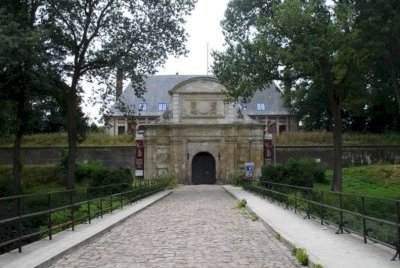
I visited the Arras Citadel in summer 2010. This Citadel now seems to be also part of a nomination called "Les villes bastionnées des Pays-Bas."
But the gate was locked and tourists were not allowed in.
All I could do was to take paths around the Citadel that are closest to it, beginning with the road between the citadel and a cemetery just north to it. You can hardly see the inside of the fort but can see the outside from various points along the paths. These paths had been created for hiking and biking.
If you are disappointed, the cemetery to the north is in fact one of the "Sites funéraires et mémoriels de la Première Guerre mondiale" TWHS, so you can walk in to look around and pay respects to the soldiers who fell at the Western Front during the WWI.
Arras also has a belfry in the center inscribed on the WH list.
So Arras has 2 sites inscribed and will possibly have 4 sites inscribed in the future, making it perhaps the most decorated city in France.
Revised: 28/04/2022
Keep reading 0 comments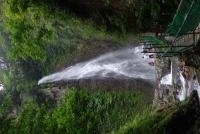
As to how to see and what you can see at the site in Arras, all you have to do is to try to take paths around the fort that are closest to the fort. Well, you can hardly see the inside of the fort, but you can see the outside, and this is all you can see there. These paths are also created for hiking and biking. One can actually walk around the fort and see the fort at various points along the way.
Also remind you that Arras' belfry is also inscribed in the WH list.
So Arras has TWO WHSs!
Keep reading 0 comments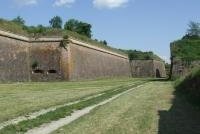
A word to describe Vauban's structures would be 'massive'. The defensive works all appear on a grand scale. But of the 12 locations forming this WHS, only the one at Longwy has been put to the test. The locations that I have visited are :
Neuf Brisach - huge fortifications, huge square and a huge red church (bus from Colmar)
Besancon - Fort Griffen (near the station) and Citadelle (free navette from Parking Chamars)
Briancon - steep streets within massive walls, with several entrance gates (train from Gap then bus #1 to Champ de Mars)
Mont Dauphin - steep hike from Mont Dauphin station (train from Gap)
Villefranche de Conflent - steep climb up to Fort Liberia through a tunnel in the cliff (train from Perpignan)
Mont Louis - fort with steep streets overlooking the Pyrenees (Petit Train Jaune to La Cabanasse)
Fort Medoc/Pate Island/Blaye - three forts on the Gironde river (train to Moulis-Listrac, bus to Cussak or Blaye, or ferry from Blaye to Lamarque)
Ile de Rey - sea walls and fortifications, citadelle occupied by the Militaire (bus from La Rochelle)
Camaret sur Mer - tower at the harbour entrance (bus from Quimper or Brest)
St Vaast La Hogue - fort on Tatihou Island and tower at La Hogue (bus from Cherbourg or Valognes, ferry to the island)
Longwy - massive fort forming the Upper Town, with ramparts, bastions and portals (train from Rheims or Luxembourg, navette to the Upper Town - except Sundays)
Arras - small fort …
Keep reading 0 comments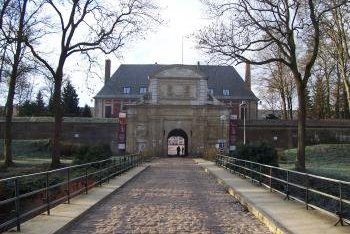
I had already visited several Vauban fortifications; however at the start of 2010 I finally visited one of the fortifications that is inscribed on the list.
Arras
From Lille I decided to visit the citadel at Arras. I apologise to any people out there who have affection for this town but this was one of the worst WHS visiting experiences I have had. The citadel itself was located about a 20 minute walk from the station through a pretty uninteresting part of town. When we got there the interior was closed, which we were pretty much expecting however I had read that there were walks around the outside that could give us a better look. This really was not obvious from the entrance and the banks of the moat just looked overgrown and uninviting. As such after taking a few pictures we just moved on. It seems that you can view something of the fortification from around the back, however there was nothing to indicate this, and we were looking pretty intently. Next to the citadel is a First World War cemetery designed by Edwin Lutyens which was reasonably nice.
We then walked through yet more uninspiring suburbs to the centre of town. It had the potential to be very nice, however something about the place was very uninspiring, after walking around the main ‘sights’ including the lovely belfry we decided to have a coffee that turned out to be exceptionally miserable. Then we just trundled of to the train …
Keep reading 0 comments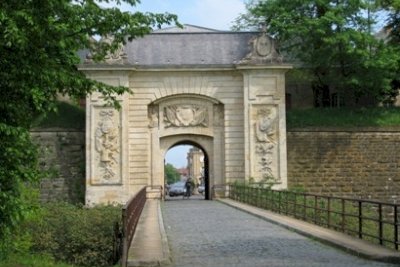
Longwy is situated at a strategic location near the French borders with Belgium and Luxemburg. And that's exactly why Vauban was put to work on it. Longwy is one of the four 'new towns' among the Vauban sites on the World Heritage List. After the annexation of this region (Lorraine) by France in 1679, a new town for military purposes was built from scratch.
The town consists of an upper and a lower part. This region has been hit hard in the past by the closure of its steel industry, and it doesn't look to have recovered too well from that yet. Especially the lower town is quite gloomy.
The 18th century Vauban fortifications are in Longwy-Haut. It's a small town, and I could easily park my car at its central square. That's where you'll find two of the landmark sights: the Saint-Dagobert Church and one of the five wells designed by Vauban. The wells were hidden under little bulletproof buildings with conical roofs. They were to supply the military and the civilians with fresh water during a siege. And sieges there were many here until the town was severely damaged in 1914 during WWI.
Leaving the town center via the pretty Porte de France, it's possible to walk along 50% of the fortified walls (the other half was destroyed). It's a fine half-hour walk on a sunny day. The ramparts are two layers thick and have many sharp edges (like points of a spear). The whole …
Keep reading 0 comments
I've been to Neuf-Brisach (Neubreisach) in Alsace a few times (on my way to nearby beautiful and touristic Colmar). It is a small town near the German border with monstrous fortifications. They are so huge and out of proportion for the small and insignificant provincial town that they almost look ridiculously bombastic. Nonetheless, they are really impressive. Other than the walls there is nothing to see in Neuf Brisach.
Keep reading 0 comments
